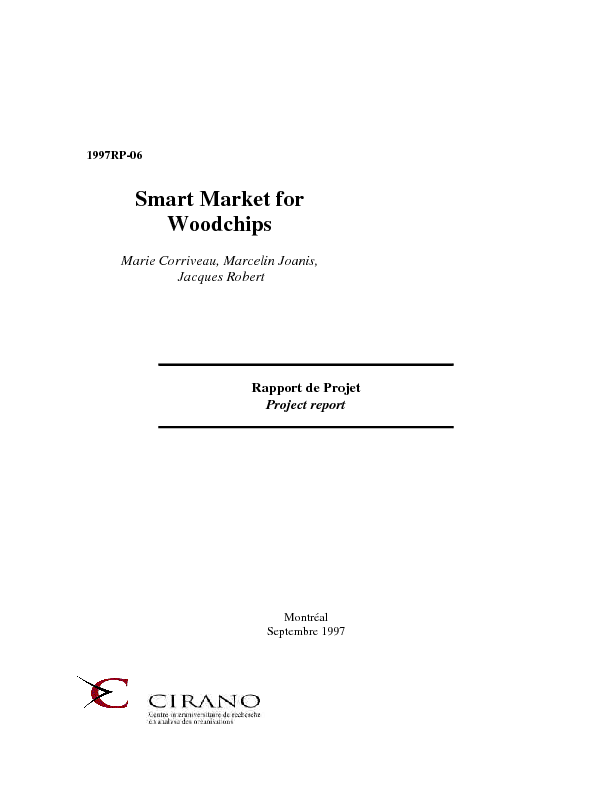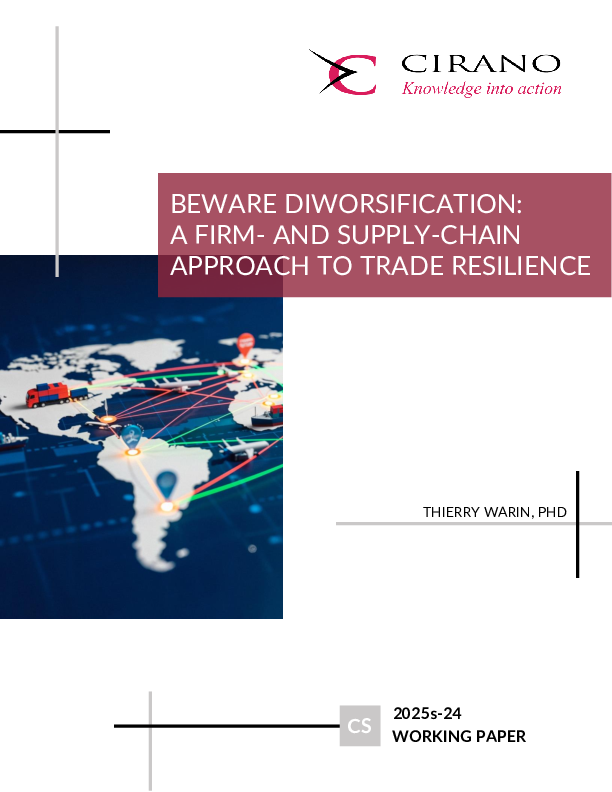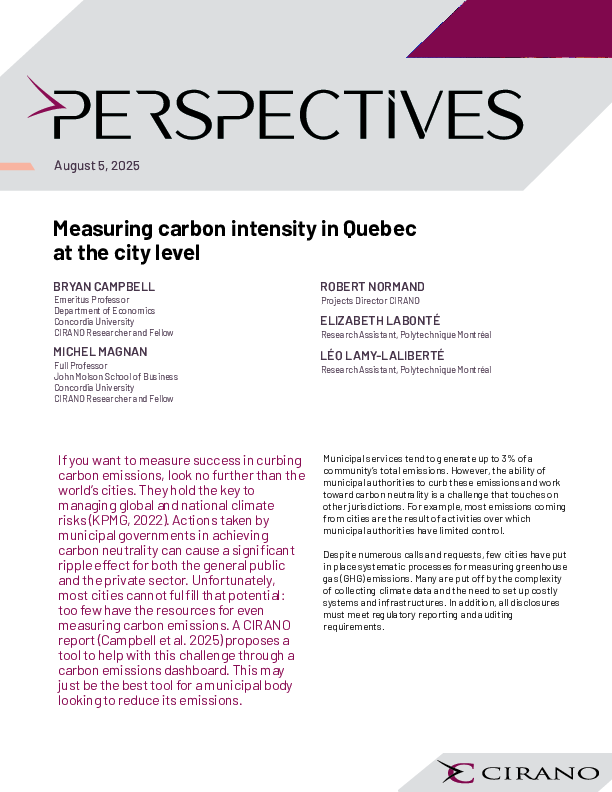Smart Market for Woodchips
This paper presents the outline for a smart market geared to Quebec s woodchip industry. It aims to explain how such a market operates, and to show how it fits into or modifies the existing trading system.
The proposed smart market has two main objectives. The first is to enhance the efficiency of the woodchip market. The electronic market is a favoured means of enhancing market flexibility and thus controlling the accumulation of unsold inventory. Such a mechanism maximizes the industry s overall profits by ensuring that each firm can identify all business opportunities within its reach and realize the additional profits associated with them. The second main objective is continuity of trade practices. Long-term contracts between sawmills and paper mills are an important market reality, and they will be an integral part of the smart market.
The keystone of our proposal is the Optimized Periodic Market (OPM). Somewhat along the lines of the Encan électronique du porc (EÉP, or electronic pork auction), set up by the Fédération des producteurs de porcs du Québec (Quebec s pork producers federation), we are proposing to establish an electronic woodchip exchange which would open up periodically (monthly, for instance) to allocate Quebec s entire woodchip output. At the close of an electronic market session, exchanges for the month will be determined, and everyone will know who he is to receive his woodchips from, or who he is to deliver them to, along with the price of each transaction and the merchandise shipment schedule.
The OPM fulfils three main functions: (1) it co-ordinates players actions with a view to reducing inventory surpluses and meeting paper mills needs as closely as possible; (2) it keeps transportation costs down by determining the least costly exchanges between sawmills and paper mills with respect to supply; and (3) it offers an effective tool for renegotiating long-term contracts.
An OPM session is in three main stages: pre-sale, sale and after-sale. At the pre-sale stage, the system gathers the information it will use to determine optimum exchanges. This information concerns two key variables in the woodchip market: quality requirements, and transportation costs. Buyers first express their technical requirements: on a BBS, they indicate the quality of the woodchips they wish to purchase and the penalties that will be applied should delivery not be in compliance with the specified technical requirements. The sellers are then invited to provide a production cost indicator for their woodchips that meets each paper mill s requirements. Sellers must also indicate the unit transportation costs (UTC) which they will have to pay if they deliver to each of the buyers. An auction mechanism for transportation costs, where buyers and third parties will be able to try to lower transportation costs, may also be set up.
The sale stage involves an auction which takes place in successive rounds. Buyers bids are demand schedules, and sellers bids are supply schedules. At the start of the opening round, buyers and sellers enter their bids through an electronic interface linked to a server. Sellers must also provide a list of the types of woodchips they wish to market, and this list will be valid for the duration of the sale. Depending on the classification of the woodchips they put up for sale and their ability to sort species, they will have the choice of offering low density chips, high density chips, and/or jack pine chips. Buyers take part in a single market grouping together the three types of woodchips. At the start of the opening round, they have to specify the minimum and maximum proportions of each type of woodchips they wish to acquire.
When all the bids have been tallied, the system generates the quantities traded and the equilibrium price paid or received by each participant. In light of this information, players can raise or lower their bids in line with their assessment of the market. Buyers can also revise the proportions of each type of woodchips they are asking for. Another round is then initiated, ending with the re-optimization of the system and disclosure of the new allocations. If no one wishes to alter his bid after the prices and quantities are announced at the end of a round, the efficient bilateral exchanges become official, and the delivery schedule for the period is established. Bid changes from one round to the next are governed by an eligibility rule whose function is to give impetus to the market, to prompt participants to be active in the market, and to reveal their real needs as early as possible.
The OPM is a medium-term market in that it lies between a long-term compensatory market and a short-term spot market. Sawmills and paper mills wishing to guarantee their supply by signing long-term agreements will be able to go the compensatory contract route. A long-term compensatory contract between a sawmill and a paper mill specifies a price and quantity of woodchips for each OPM period (each month). In this way, the paper mill is guaranteed a certain quantity of woodchips at a certain price, and the sawmill is guaranteed a price for a given portion of its output. Data from these compensatory contracts are then taken into consideration by the OPM. Somewhat like term markets, compensatory contracts are agreements on financial flow alone. It is the OPM which determines the actual exchanges of woodchips.
The proposed market mechanism is designed to ensure that participation in the OPM is to everyone s benefit. With flexibility, transparency and the implementation of an open competitive mechanism, beneficial participation for all is one of the guiding principles of the smart market for woodchips. A participant bound by a compensatory contract is guaranteed to find himself, after an OPM session, in a situation at least as beneficial as that provided for in the contract. The spirit of the compensation mechanism is that if one of the partners receives an unfavourable price on the OPM, he will be compensated by his partner. In this way, the OPM compensation rule and renegotiation mechanism offer a procedure guaranteeing: (1) each participant the equivalent of what is negotiated in the long-term contract; and (2) all participants the possibility of discovering and realizing additional profits that are accessible but have not yet been realized.
The proposed smart market is rounded out by a very short-term spot market on which sawmills will be able to liquidate their surpluses and paper mills will be able to procure additional quantities of woodchips, thus dealing with surpluses and unfilled requirements not anticipated in the OPM session. The spot market may be presented in the form of a BBS through which each facility will be able to initiate an auction.
[ - ]
The proposed smart market has two main objectives. The first is to enhance the efficiency of the woodchip market. The electronic market is a favoured means of enhancing market flexibility and thus controlling the accumulation of unsold inventory. Such a mechanism maximizes the industry s overall profits by ensuring that each firm can identify all business opportunities within its reach and realize the additional profits associated with them. The second main objective is continuity of trade practices. Long-term contracts between sawmills and paper mills are an important market reality, and they will be an integral part of the smart market.
The keystone of our proposal is the Optimized Periodic Market (OPM). Somewhat along the lines of the Encan électronique du porc (EÉP, or electronic pork auction), set up by the Fédération des producteurs de porcs du Québec (Quebec s pork producers federation), we are proposing to establish an electronic woodchip exchange which would open up periodically (monthly, for instance) to allocate Quebec s entire woodchip output. At the close of an electronic market session, exchanges for the month will be determined, and everyone will know who he is to receive his woodchips from, or who he is to deliver them to, along with the price of each transaction and the merchandise shipment schedule.
The OPM fulfils three main functions: (1) it co-ordinates players actions with a view to reducing inventory surpluses and meeting paper mills needs as closely as possible; (2) it keeps transportation costs down by determining the least costly exchanges between sawmills and paper mills with respect to supply; and (3) it offers an effective tool for renegotiating long-term contracts.
An OPM session is in three main stages: pre-sale, sale and after-sale. At the pre-sale stage, the system gathers the information it will use to determine optimum exchanges. This information concerns two key variables in the woodchip market: quality requirements, and transportation costs. Buyers first express their technical requirements: on a BBS, they indicate the quality of the woodchips they wish to purchase and the penalties that will be applied should delivery not be in compliance with the specified technical requirements. The sellers are then invited to provide a production cost indicator for their woodchips that meets each paper mill s requirements. Sellers must also indicate the unit transportation costs (UTC) which they will have to pay if they deliver to each of the buyers. An auction mechanism for transportation costs, where buyers and third parties will be able to try to lower transportation costs, may also be set up.
The sale stage involves an auction which takes place in successive rounds. Buyers bids are demand schedules, and sellers bids are supply schedules. At the start of the opening round, buyers and sellers enter their bids through an electronic interface linked to a server. Sellers must also provide a list of the types of woodchips they wish to market, and this list will be valid for the duration of the sale. Depending on the classification of the woodchips they put up for sale and their ability to sort species, they will have the choice of offering low density chips, high density chips, and/or jack pine chips. Buyers take part in a single market grouping together the three types of woodchips. At the start of the opening round, they have to specify the minimum and maximum proportions of each type of woodchips they wish to acquire.
When all the bids have been tallied, the system generates the quantities traded and the equilibrium price paid or received by each participant. In light of this information, players can raise or lower their bids in line with their assessment of the market. Buyers can also revise the proportions of each type of woodchips they are asking for. Another round is then initiated, ending with the re-optimization of the system and disclosure of the new allocations. If no one wishes to alter his bid after the prices and quantities are announced at the end of a round, the efficient bilateral exchanges become official, and the delivery schedule for the period is established. Bid changes from one round to the next are governed by an eligibility rule whose function is to give impetus to the market, to prompt participants to be active in the market, and to reveal their real needs as early as possible.
The OPM is a medium-term market in that it lies between a long-term compensatory market and a short-term spot market. Sawmills and paper mills wishing to guarantee their supply by signing long-term agreements will be able to go the compensatory contract route. A long-term compensatory contract between a sawmill and a paper mill specifies a price and quantity of woodchips for each OPM period (each month). In this way, the paper mill is guaranteed a certain quantity of woodchips at a certain price, and the sawmill is guaranteed a price for a given portion of its output. Data from these compensatory contracts are then taken into consideration by the OPM. Somewhat like term markets, compensatory contracts are agreements on financial flow alone. It is the OPM which determines the actual exchanges of woodchips.
The proposed market mechanism is designed to ensure that participation in the OPM is to everyone s benefit. With flexibility, transparency and the implementation of an open competitive mechanism, beneficial participation for all is one of the guiding principles of the smart market for woodchips. A participant bound by a compensatory contract is guaranteed to find himself, after an OPM session, in a situation at least as beneficial as that provided for in the contract. The spirit of the compensation mechanism is that if one of the partners receives an unfavourable price on the OPM, he will be compensated by his partner. In this way, the OPM compensation rule and renegotiation mechanism offer a procedure guaranteeing: (1) each participant the equivalent of what is negotiated in the long-term contract; and (2) all participants the possibility of discovering and realizing additional profits that are accessible but have not yet been realized.
The proposed smart market is rounded out by a very short-term spot market on which sawmills will be able to liquidate their surpluses and paper mills will be able to procure additional quantities of woodchips, thus dealing with surpluses and unfilled requirements not anticipated in the OPM session. The spot market may be presented in the form of a BBS through which each facility will be able to initiate an auction.




